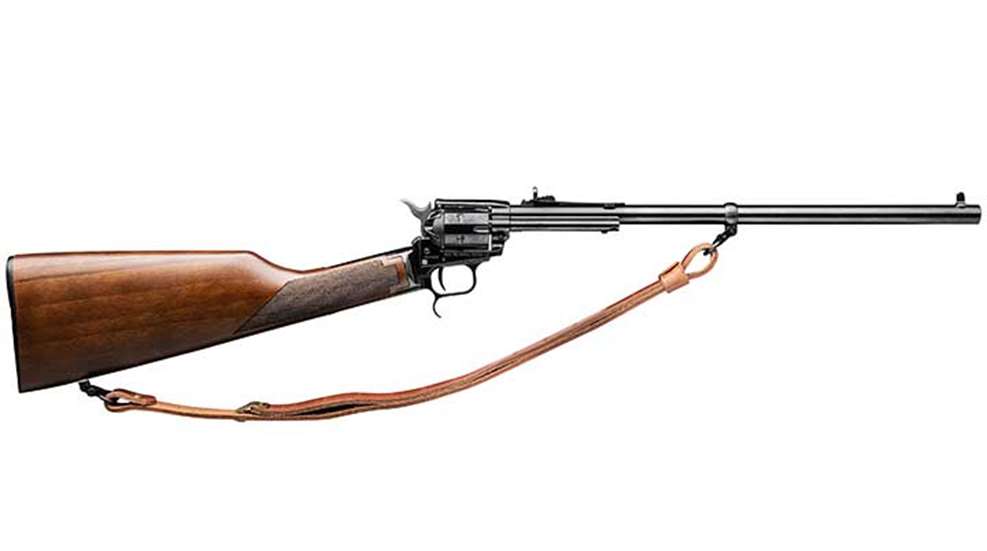
Heritage Manufacturing, Inc. has made quite an impression on the U.S. shooting market over the last few years with its diverse selection of inexpensive, American-Made Rough Rider .22-cal. single-action revolvers. Essentially a scaled-down take on the famous Single Action Army design, several versions of the Rough Rider rimfire are selling at real-world prices around $150 or less. The popularity of the platform has made Heritage one of the top revolver manufacturers in the country (inspiring the launch of the Ruger Wrangler in 2019).
Last year Heritage decided to shake things up with the release of an extra-long 16" barrel Rough Rider inspired by the 1873 Buntline. Because the original Buntlines are the definitive unicorn guns, the stretch-job Rough Riders have been a popular item with enthusiasts who want to enjoy shooting a long-barrel single-action and do so for less than $200.
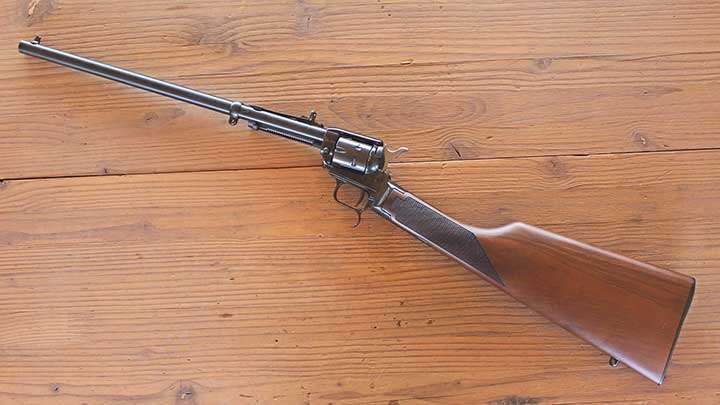
This year, the company has expanded on the long-barrel wheelgun concept by introducing the Rough Rider Rancher Revolver Carbine. Although we tend to associate certain action types with particular firearm categories (bolt-action rifles, pump-action shot guns, etc.) just about every action design has been pressed into service in other roles. Handy rifles built with revolving actions have been around almost as long as the single-action revolver itself.
Like modern semi-auto pistol-caliber carbines, single-action revolver carbines of the past allowed folks to carry just one caliber of ammunition for both their handgun and carbine. Just like other Rough Riders, the Rancher is a single-action revolver, meaning, the hammer must be manually cocked for each shot fired. Although the Rancher is not a replica of a historical firearm, it draws on historical influences that give it an appealing classical appearance.
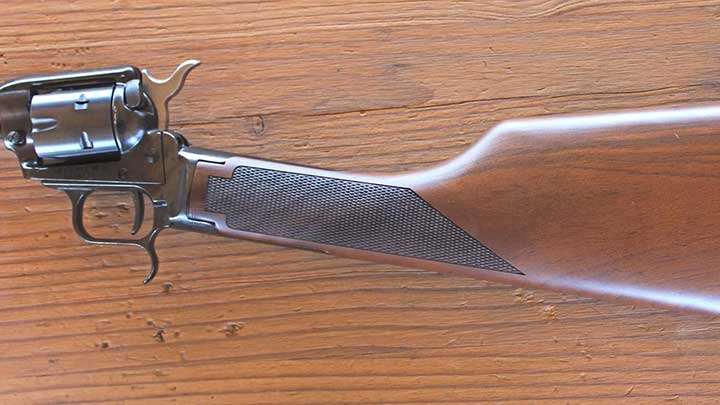
The round-profile 16.25" barrel is constructed of carbon steel with a matte-blued finish. The sight system consists of a dovetailed brass bead front sight and an adjustable buckhorn rear sight. A sling swivel band is mounted to the barrel, along with a stud mounted to the shoulder stock, to support the provided leather shoulder sling. The fluted 6-shot .22 LR cylinder is blued steel, like the barrel.
The ejector housing, frame and the straight grip frame with its integral trigger guard are made from an aluminum alloy treated with a slightly glossy black coating that seems to lean towards being more affordable than durable based on the wear patterns I saw. It's not a dealbreaker, considering that it has no effect on the gun's reliability, but it is one of the tradeoffs that comes with the Rough Rider's low price tag. The hammer has a checkered spur for easier cocking with a total of four positions.
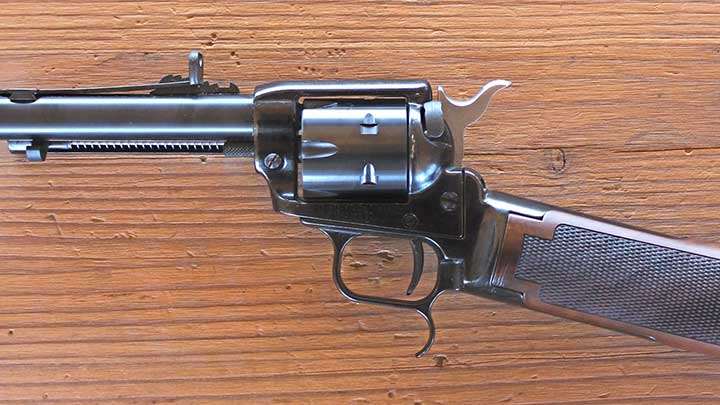
The first is fully forward, resting against the firing pin. This is where the hammer is positioned after firing a shot. Pulling back gently on the hammer will bring it back one click, which is the safe position. The hammer is locked back away from the firing pin, the cylinder will not rotate and the trigger will not cycle.
Pulling the hammer back further will bring it to a second click, or the half-cock position. The trigger is still locked up, but now the cylinder can be manually rotated for loading or unloading through the right-side loading gate. Pulling the hammer back all the way, to the third click, brings it to the fully cocked position. Now the carbine is ready to fire. If the trigger is pulled, the hammer will fall forward to strike the frame-mounted firing pin and ignite the cartridge.
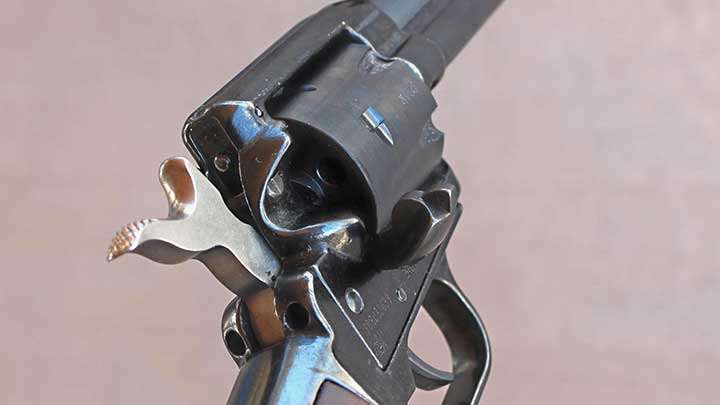
On the left side of the frame, opposite of the loading gate, is a modern thumb safety that takes the place of the transfer-bar safety systems found in some single-action revolvers. Rotating the lever up into the Safe position blocks the hammer from striking the firing pin. Rotating it down into the Fire position exposes a red warning dot on the frame and allows the hammer to complete its arch of travel. But in addition to the manual safety and the hammer's first-click safety, the left side of the barrel is stamped with a recommendation to carry the Ranger with the hammer placed over an empty chamber.
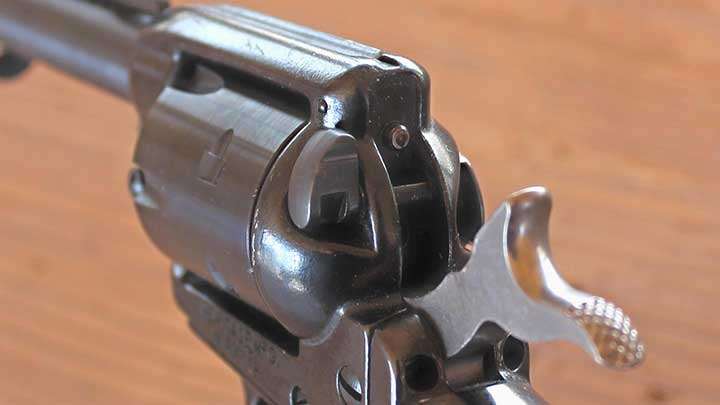
The curved revolver grip frame has been replaced with a straight rifle stock frame that supports a handsome checkered walnut shoulder stock with a textured polymer butt plate. The single-action trigger of this particular gun broke cleanly with 3-lbs. 6-oz. of pressure. The hook located under the trigger guard is a rest for the index finger of the support hand when using the recommended two-handed shooting grip.
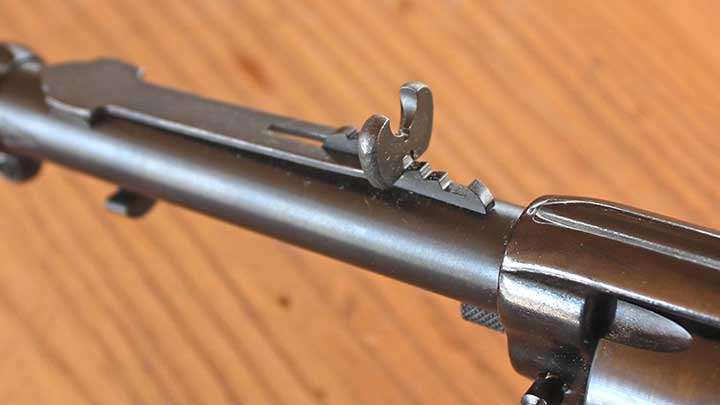
When shooting this carbine, it’s important to mind the cylinder gap. This space between the face of the cylinder and the barrel's forcing cone allows the hot gases produced by the ignition of the cartridge to blow out both sides of the frame each time the carbine is fired. Keeping both hands wrapped around the stock (a diagram is provided in the owner's manual), back behind the cylinder will keep them from getting burned or cut by the cylinder blast.
A few times during the test, I caught a bit of blowback from the cylinder across my face. It didn't burn me, but I was glad that I was wearing safety glasses. Using a two-handed grip with this carbine felt a bit awkward at first since the positioning is somewhere in between a typical rifle stance and pointing a pistol.
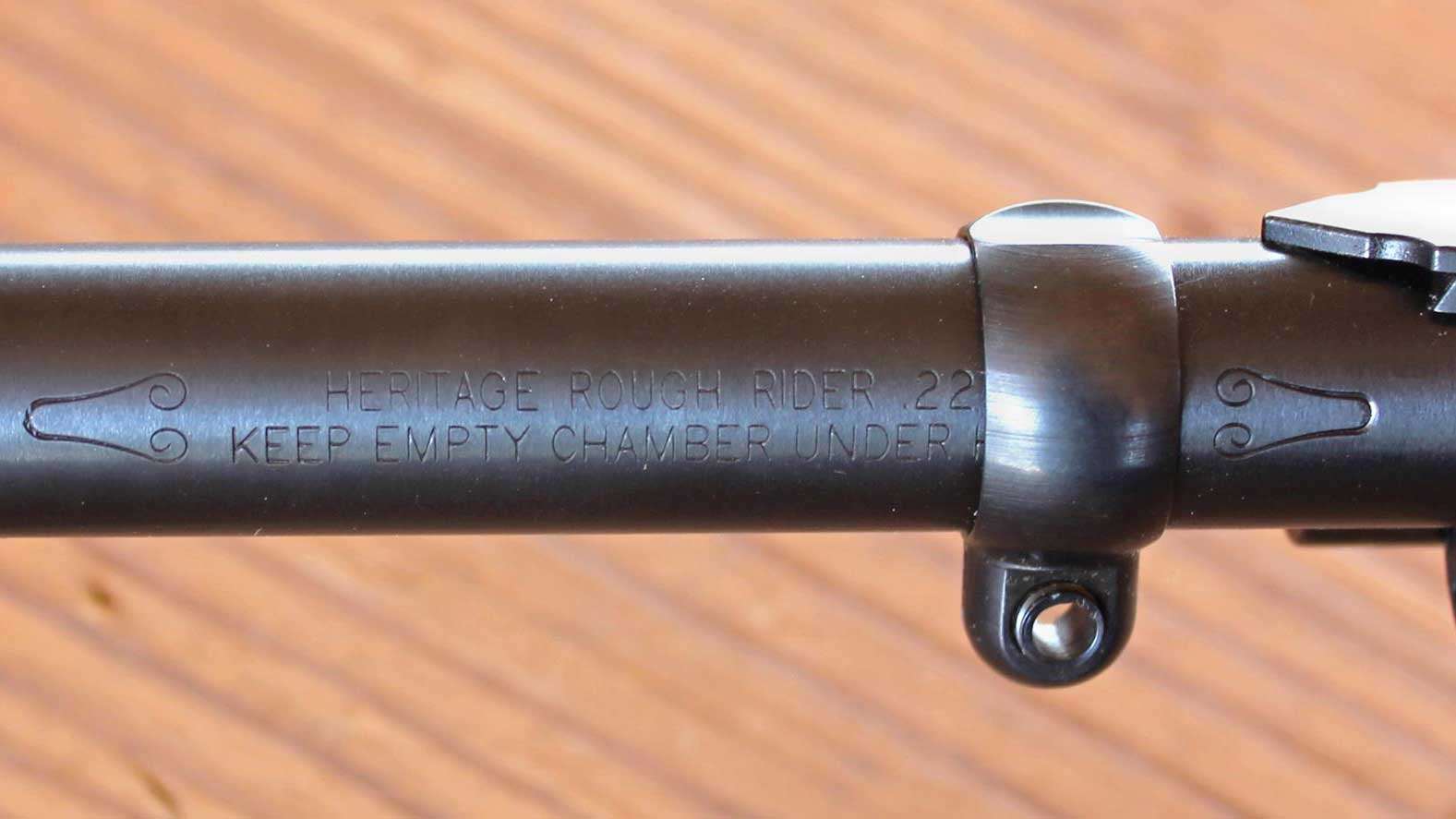
But with a bit of fidgeting, I found the grip position I liked best and from there, the shooting became quite enjoyable. The Rancher is light and handy with an easy swing and mild levels of felt recoil. There's almost no muzzle rise when it fires. Its steady feel, clean trigger and useful sights kept me reloading the Rancher well after the range testing was complete.
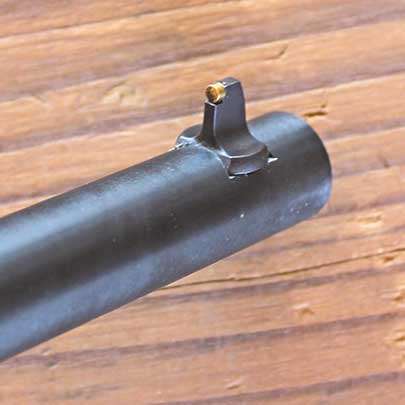
So far, my experience has been that handguns built from rifle-type actions (like AR-15 pistols) tend to be more accurate than typical handgun designs. However, the pistol-caliber carbines I've shot that are built around handgun actions (like the Iver Johnson 1911A1 Carbine) are not as accurate at middle distances as carbines built around rifle actions. I've shot various .22 LR bolt actions, lever-actions and semi-autos that produced five 5-shot group averages between 1" to 1.5" when fired from a bench rest at 50 yds. using an optic.
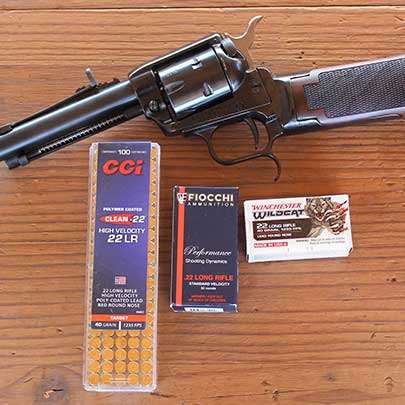
The Rancher's bench-rested groups hovered right around 3.5" in size at this distance. Fiocchi USA Performance Shooting Dynamics' 40 gr. wax-coated lead round nose with a listed velocity of 1,070 f.p.s knocked out a best single group of 3.43" with a five group average of 3.58". Winchester's Wildcat 40 gr. wax-coated lead round nose, listed at 1,255 f.p.s, produced a best group of 3.33" with a group average of 3.52". The recently released CCI Clean-22 40 gr. polymer coated lead round nose load with a listed velocity of 1,235 f.p.s. turned in the tightest results with a best group of 3.07" and an average of 3.24".
The Heritage Manufacturing, Inc. Rough Rider Rancher provides an enjoyable and affordable way to experience what it's like to use a revolver carbine. Although this platform faded out of production decades ago as more advanced carbine designs were developed, it still has a rich history worth exploring. The Rancher is also just plain fun to shoot. It’s an ideal plinker for folks who are ready to try something completely different from typical rimfire options.
Specifications:
Manufacturer: Heritage Manufacturing Inc.
Model: Rough Rider Rancher (BR226B16HS-LS)
Action: Single-Action Revolver Carbine
Caliber: .22 LR
Barrel: 16.25" Blued Steel, Round Profile with Sling Mount
Front Sight: Brass Bead
Rear Sight: Adjustable Buckhorn
Ejector Housing: Aluminum Alloy, Black Finish
Frame: Aluminum Alloy, Black Finish
External Safety: Left Side Manual Lever
Hammer: Checkered Spur
Trigger Pull: 3 lbs. 6 oz. (As Tested)
Cylinder: Blued Steel, Fluted
Grip Frame with Trigger Guard: Aluminum Alloy, Black Finish with Finger Hook
Shoulder Stock: Checkered Walnut with Polymer Butt Plate and Sling Stud
Length of Pull (LOP): 14.25"
Overall Length: 32”
Cylinder Width: 1.42”
Weight: 3-lbs. 14-oz. (Without Sling)
Capacity: 6 Rounds
Twist: 1:16 RH
Rifle Grooves: 8
Accessories: Leather Shoulder Sling, Lock, Owner's Manual
Suggested Retail: $297.30





































